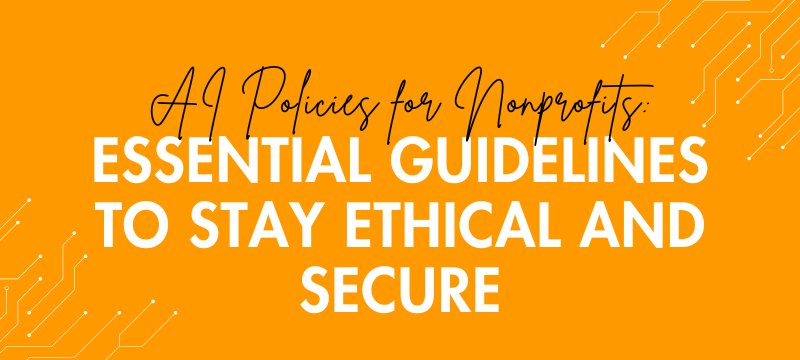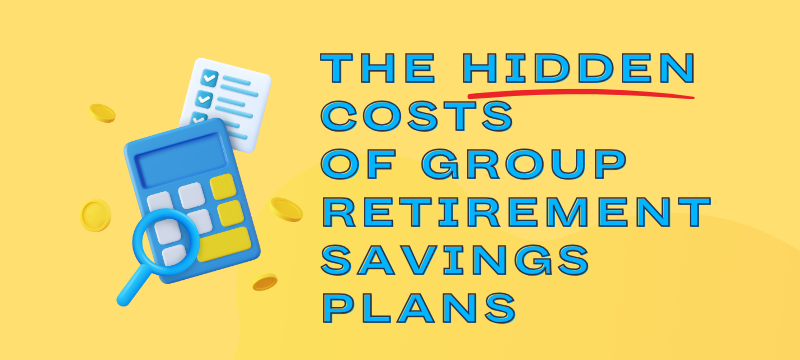Who benefits from tariffs? Who really pays the price? Today, we’re diving into US-Canada tariffs…

Don’t Wait for a Crisis: How Nonprofit EDs Can Start Succession Planning Now
Don’t Wait for a Crisis: How Nonprofit EDs Can Start Succession Planning Now
Most nonprofit Executive Directors know they should have a succession plan.
Very few actually do.
It’s not about bad leadership—it’s about bandwidth. When you’re dealing with budgets, people, funders, and board politics, “what happens when I leave” falls to the bottom of the list.
But here’s the reality: leadership transitions are going to happen. Whether it’s temporary (a leave, illness, burnout) or permanent (a new role, retirement), the impact is real—and the cost of not planning is high.
So, how do you actually start nonprofit succession planning in a way that’s useful, doable, and not overwhelming?
Here’s what we recommend.
1. Define What Succession Planning Means for Your Nonprofit
Not every nonprofit needs a 30-page binder. But every organization needs clarity on these three questions:
- What happens if the ED is away for a week? A month? Three months?
- Who can keep things moving in the short term?
- Who’s in the pipeline—or how will we find the next leader when it’s time?
The first step is to define the type of plan you need:
- Emergency backup (30–90 days)
- Leadership transition (permanent departure or retirement)
- Long-term leadership development (building the bench)
You don’t have to do it all at once. But knowing what kind of nonprofit succession planning is needed right now helps you focus.
2. Get Real About Your Key Responsibilities
Ask yourself: “If I stepped away for 30 days, what would fall apart?”
This forces you to take stock of:
- What only you are currently doing
- Where institutional knowledge is stuck in your head
- Which relationships would be at risk
Common ED responsibilities that need to be documented or delegated:
- Finance: Signing authority, budget tracking, approving expenses
- Staff: Direct reports, performance issues, conflict resolution
- Board: Meeting prep, reporting, governance questions
- External: Funders, government relations, media, key partners
- Strategy: Progress tracking, setting priorities, aligning teams
Map your week. What tasks absolutely require your involvement—and which ones could someone else manage with the right context?
Then write it down. Even a basic list is better than starting from scratch under pressure.
3. Name an Interim (Even If It’s Temporary)
You don’t need to name your successor. But you should know who could take over in the short term.
Start by identifying someone who:
- Understands the big picture of your operations
- Has strong trust with staff and the board
- Can stay calm in a crisis
- Has the bandwidth to step up (or can be supported to do so)
That might be a senior staff member, a deputy ED, or a board chair in an emergency. Some nonprofits even write “acting ED” clauses into senior staff contracts to formalize this.
And if no one fits that bill? That’s useful data—it means you’ve got a bench-strength issue, and it’s time to build internal leadership capacity.
4. Talk to Your Board Before It’s Awkward
Succession planning is a governance responsibility, not just an operational one. But boards often assume the ED has it handled—and EDs assume the board will take charge if needed.
Don’t wait for a crisis to sort it out.
Here’s how to start the conversation:
“I’m not going anywhere—but I want to make sure the organization is prepared for anything. Can we carve out time to review or build a simple succession plan?”
You can also ask:
- What are the board’s first three steps if I’m unavailable?
- Who leads communication to staff, funders, and stakeholders?
- Do we have shared access to key documents, accounts, and contracts?
This kind of planning builds trust and clarity on both sides.
5. Start Building Leadership Capacity—Now
Nonprofit succession planning isn’t just about having a name in your back pocket. It’s about building readiness so the whole organization is less vulnerable.
Simple ways to build leadership strength:
- Invite senior staff to attend board meetings or present updates
- Rotate leadership roles on grant writing, campaigns, or strategic planning
- Start documenting key systems and processes as you go
- Let others manage major relationships (with funders, partners, or vendors)
The more people involved in leadership today, the smoother any transition will be tomorrow.
6. Review It Annually (Even If Nothing Changes)
Leadership, team roles, and capacity shift all the time. That’s why even a basic plan needs an annual review.
Set a reminder—at year-end or strategic planning time—to review:
- Is the interim person still the right fit?
- Have we updated contacts, responsibilities, and key relationships?
- Does our board know what the current plan looks like?
This doesn’t need to take hours. A 30-minute review keeps the plan real and usable.
Bottom Line
Nonprofit succession planning isn’t about your exit. It’s about your responsibility as a leader.
You don’t need a perfect plan. You just need a real one.
Start with what you know. Build from there. Keep it updated. And most importantly—don’t do it alone.
Strong organizations aren’t built on individuals. They’re built on systems that can outlast them.
Want to Keep This Conversation Going?
We’re talking about this exact challenge at ONE: The OTUS Nonprofit Exchange on June 4 in Ottawa. In one of our most talked-about sessions, nonprofit leaders will share real stories of what happened when leadership transitioned—what worked, what didn’t, and how they’d do it differently. If nonprofit succession planning is still sitting on your to-do list, this session is where you’ll get the clarity and motivation to move it forward.



